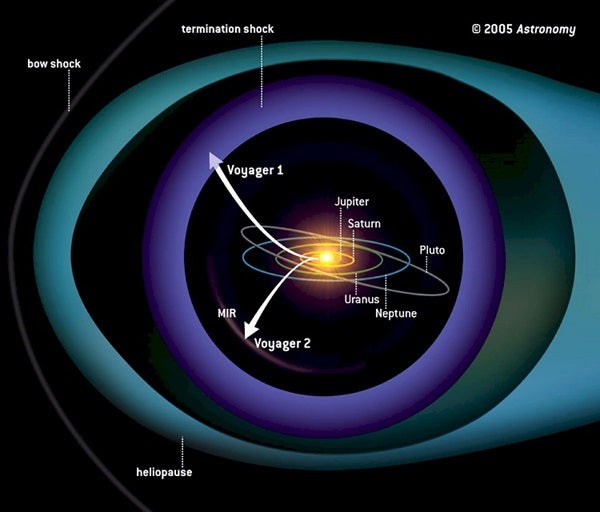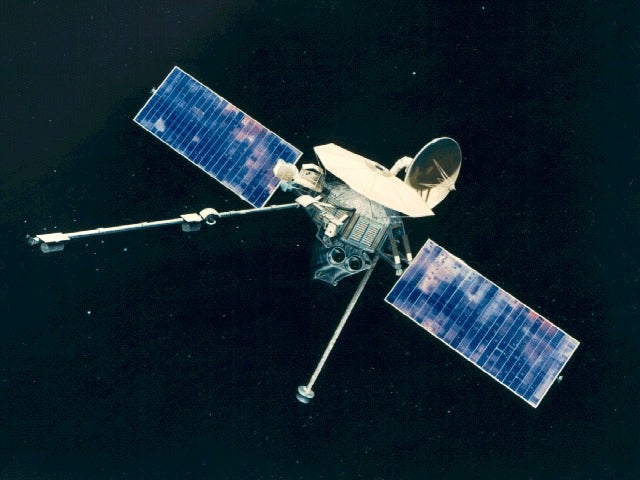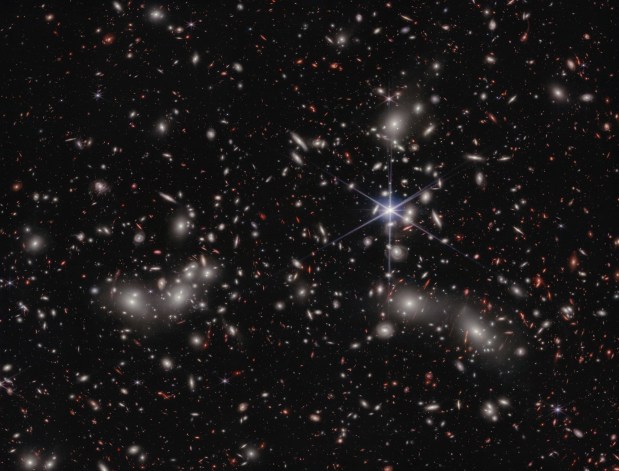As the two Voyagers near the edge of the heliosphere, the area dominated by the Sun’s influence, they are returning valuable information on the composition and dynamics of the far solar wind and on solar outbursts billowing away from the Sun. Last year, the Voyagers participated in tracking remnants of the massive gas clouds that erupted from the Sun during the Halloween Storms of October and November 2003. Some of the most powerful flares ever recorded hurled billion-ton clouds of ionized gas — called coronal mass ejections (CMEs) — through the solar system. Faster CMEs combined with slower ones to form what scientists call a Merged Interaction Region (MIR). By the time the resulting shock reached Voyager 2 April 28, 2004, it had slowed to about one-third of its original speed, passing the spacecraft at 1.5 million miles per hour (2.4 million km/h). Predictions called for the cloud to pass Voyager 1 by the end of June, but the spacecraft did not detect it.
As the MIR moves outward from the Sun, it eventually will cross the termination shock, where the solar wind collides with the interstellar wind and slows. From there, the gas will continue until it reaches the heliopause, the edge of the heliosphere. There, it will mix with cooler gas in the interstellar medium.
If the MIR has retained sufficient energy, this event will create low-frequency radio waves that both Voyagers can detect. Scientists can calculate the distance to the heliopause — and, by inference, the termination shock — by comparing the arrival time of the MIR’s radio signal with the time the shock passed the spacecraft. One of the science goals of what we now call the Voyager Interstellar Mission is to encounter the termination shock so we can observe interactions between the solar wind and its interstellar counterpart.
In fact, Voyager 1 may be close already. Recent observations indicate Voyager 1 is in a region unlike any it has encountered in all its years of exploration. Some scientists believe Voyager 1 has begun its passage through the termination shock, but the phenomena we observe are somewhat different than what was expected. So the debate continues while scientists try to understand what the spacecraft’s instruments are telling us. If Voyager 1 has encountered the termination shock, it would be the first spacecraft to have entered the solar system’s final frontier, a vast expanse where wind from the Sun blows hot against the thin, cold gas between the stars. — ED B. MASSEY, GODDARD SPACE FLIGHT CENTER, GREENBELT, MARYLAND










